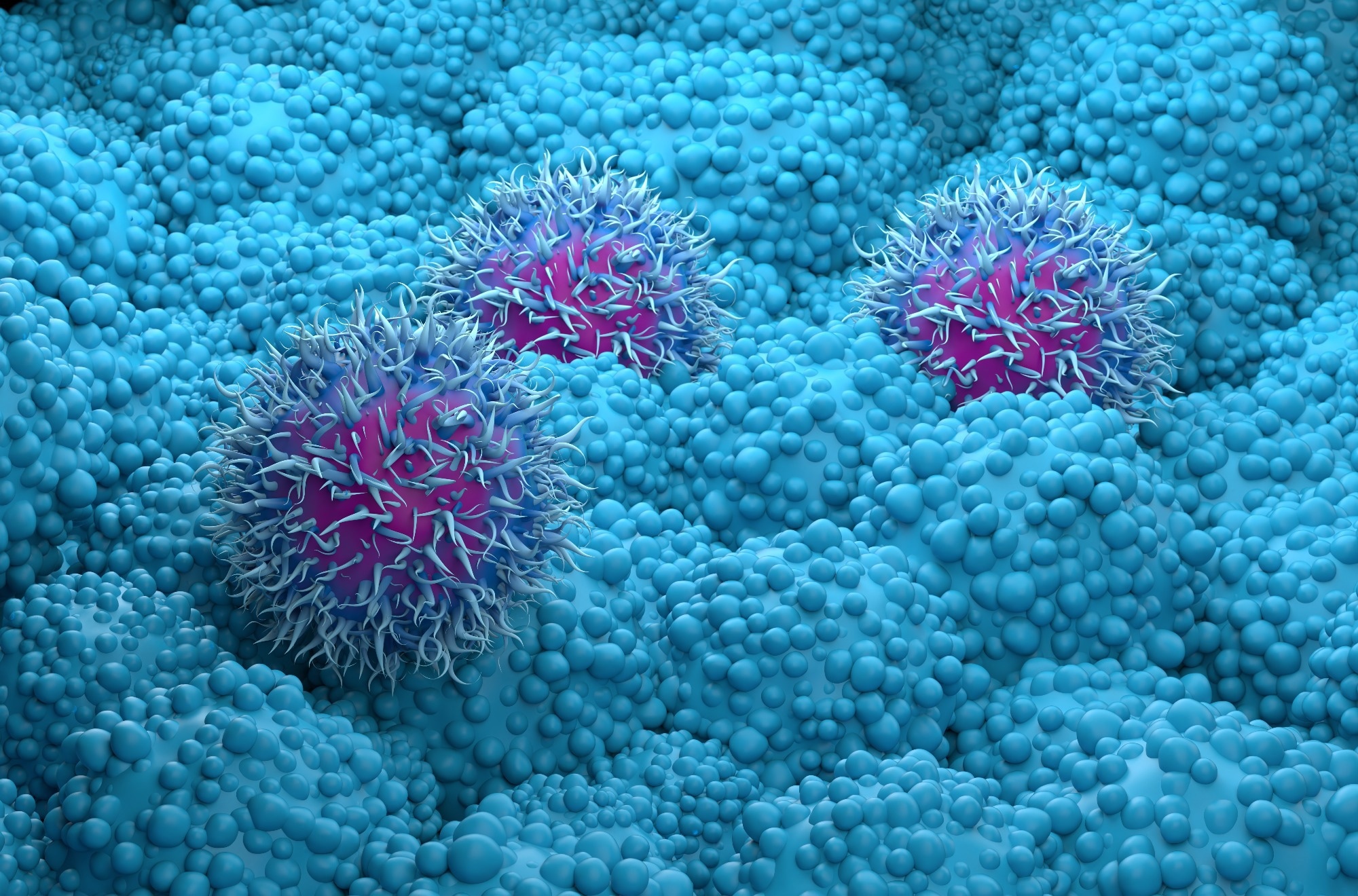Reviewed by Mila PereraSep 15 2022
The total death rate of cancer has decreased by over 30% over the past 30 years, thanks to advancements in early detection and treatment. However, treating pancreatic cancer has proven challenging. Since biological features that help this cancer resist treatment, just one in nine patients survive five years after diagnosis.

Image Credit: Shutterstock.com/Nemes Laszlo
To reverse the trend, UCLA scientists have devised a technology that administers a combination therapy to pancreatic tumors using nanoscale particles packed with 3M-052, an investigational drug that can increase immune activity and help challenge tumor resistance, and irinotecan, a chemotherapy drug approved as part of a drug regimen for pancreatic cancer.
In a recent study published in the journal ACS Nano, the study team demonstrated that in a mouse model of pancreatic cancer, the concurrently delivered mixture performed better than the sum of its parts.
In my opinion, invoking the immune system will make a big difference in providing a much better treatment outcome for pancreatic cancer. That’s where I hope this research is taking us.
André Nel, Study Corresponding Author and Distinguished Professor, Medicine, California Nanosystems Institute, UCLA
Nel was also the director of research at the California NanoSystems Institute at UCLA.
In mice, the double-loaded nanocarrier created by the scientists outperformed irinotecan administered without a carrier or nanocarriers that independently transported the two medications to reduce tumor size and prevent cancer spread.
Additionally, the combination therapy increased the number of immune cells that can fight cancer at tumor locations and prolonged the duration of medication levels in the blood. There was no proof that the side effects were negative.
Irinotecan also prevents cancer cells from proliferating by alerting the immune system’s dendritic cells to a threat. These cells then mobilize killer T cells, which go to tumor areas and eradicate cancer cells.
However, as dendritic cells in patients with pancreatic cancer frequently exhibit functional impairment, 3M-052 offers additional support, enabling them to effectively marshal killer T lymphocytes at the cancer site and in adjacent lymph nodes.
Cancer combination therapy is not new, but combining medications in a single nanocarrier has proven challenging. The Food and Drug Administration has only approved one dual-delivery nanocarrier for chemotherapy.
The Nel lab has created a method for simultaneous delivery during the past seven years, and the most recent results show how their unique nanocarrier design makes it possible for the medications to act together more efficiently than if they were individually administered.
Similar to a cell membrane, most nanocarriers are layers of lipid molecules made up of fatty substances, with places where medications can be packed. The core glass bubble in the novel gadget is formed of silica, and a double layer of lipids surrounds it. The hollow interior of the glass bubble can be filled with irinotecan.
The second medicine could be integrated directly into these outer lipid layers using the fatty tail of the 3M-052 molecule, as discovered by UCLA postdoctoral researcher and first author Lijia Luo.
The carrier’s structural layout, which is so small that it would take 1,000 to cover the width of a human hair, reduces the risk of medication leakage and toxicity as it passes through the tough rope-like barrier encircling pancreatic cancer and makes its way to the tumor site.
Compared to previous drug carriers, the glass bubbles provide higher leakage protection, allowing the carrier to deliver more irinotecan to the tumor location.
The group will conduct additional preclinical studies to validate quality control for silica nanocarrier manufacture on a wide scale and test their therapy in large animal models.
“It traditionally takes 10 to 20 years for new breakthrough technologies to reach the marketplace,” said Nel, who is also the founder and chief of UCLA’s nanomedicine division and director of the University of California’s Center for Environmental Implications of Nanotechnology.
Nanocarriers have been around for almost 20 years. While lipid-based nanocarriers are leading the way, the silica-based carrier decorated with lipid layers stands a good chance of speeding up the rate of discovery and improving cancer immunotherapy.
André Nel, Study Corresponding Author and Distinguished Professor, Medicine, California Nanosystems Institute, UCLA
Researchers Xiang Wang, Yu-Pei Liao, and Chong Hyung Chang, all from UCLA, are also co-authors of the paper.
The National Cancer Institute funded the study.
Journal Reference:
Luo, L., et al. (2022) Nanocarrier Co-formulation for Delivery of a TLR7 Agonist plus an Immunogenic Cell Death Stimulus Triggers Effective Pancreatic Cancer Chemo-immunotherapy. ACS Nano. doi.org/10.1021/acsnano.2c06300.